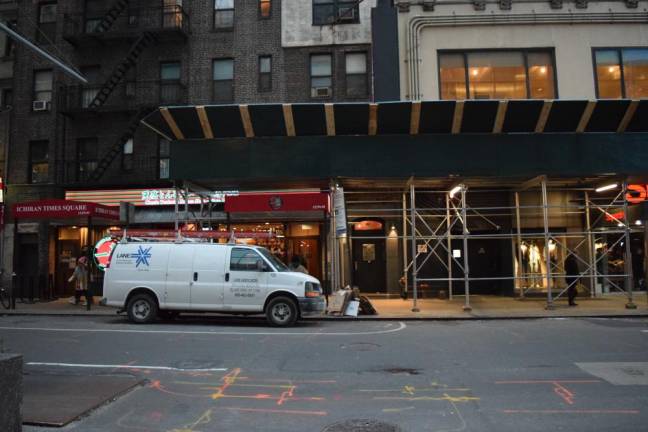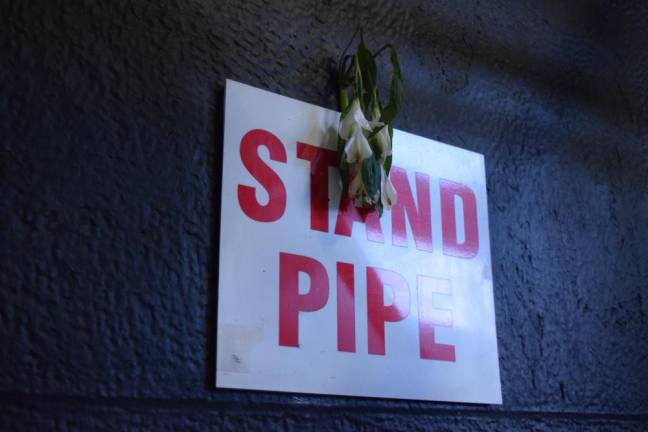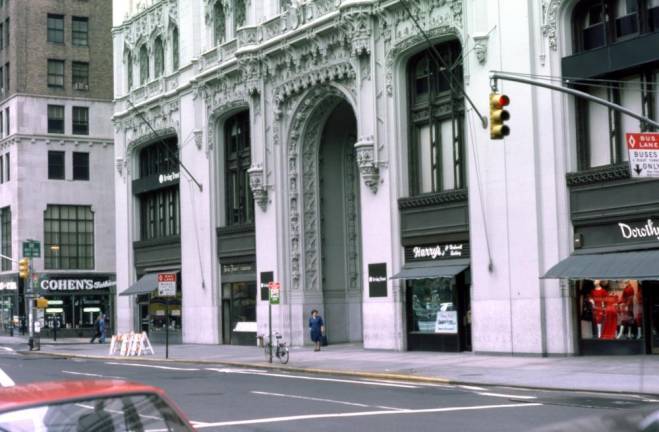Deadly Terracotta and Sidewalk Sheds
A falling chunk of debris kills architect Erica Tishman and focuses new attention on city scaffolds



A recent front-page New York Post story decried the “scandal of [New York City’s] everlasting scaffolds,” or sidewalk sheds. It called attention to the 300 miles of these plywood and pipe contraptions, which mar the landscape and block out the sun for years at a time. And it blamed landlords for the seeming permanence of these ugly green structures all over town because they find it cheaper to keep them up indefinitely than to do required building facade repairs.
But that’s not the whole story. The deeper question is: what makes these scaffolds necessary in order to protect pedestrians from falling debris? A leading culprit is the once widely-used construction material known as terracotta. Last Tuesday, Erica Tishman, a 60-year-old architect, was killed when a chunk of terracotta fell off a 1915 office building north of Times Square that had been cited by the city for failure to fix its facade. Century-old dilapidated terracotta, often attached to rusted metal anchors, is a major reason for the proliferation of these sidewalk sheds.
“I am saddened and outraged by the totally preventable death of Erica Tishman," U.S. Rep. Carolyn Maloney tweeted. "The building owners who chose to pay a fine rather than make necessary, life-saving, repairs must be held accountable & should be punished to the full extent of the law.”
Terracotta is very common in prewar buildings, and has been employed in some of the most iconic facades of the Manhattan skyline, including the Woolworth and Flatiron Buildings. A hard-baked clay used by potters since ancient times, terracotta (“baked earth” in Italian) became a popular building material in the 1890s. It was lighter, cheaper and easier to shape than carved stone, yet could be made to look like limestone or granite. In fact, its chameleon-like character makes it hard to tell what’s terracotta and what’s not.
Changing Architectural Tastes
Terracotta was particularly favored for building ornaments, such as cartouches, gargoyles and urns. Formally known as historic glazed architectural terracotta, its glazes made possible the profusion of colors characteristic of Art Deco buildings of the 1930s. But shortly thereafter, terracotta fell out of favor, as architectural tastes drifted toward simpler, sleeker facades.
Recently manufactured terracotta, aided by installation techniques that allows for better water seepage, has renewed the fortunes of this architectural ceramic, though it is still used mostly to replace older existing terracotta. But there are very few American companies that make terracotta today, compared to two dozen in 1924, and the material is no longer inexpensive.
Other construction materials can break down too, of course, but damaged terracotta of the sort that turned deadly this week is a major concern of the city’s Department of Buildings. It can chip, craze, crack and crumble, especially when attached to rusted steel that expands and loosens the adjoining masonry.
How do buildings deal effectively with their vulnerable facades? An architect hired to oversee necessary repairs sends a specialist aloft, sometimes in a cherry picker, to visually inspect the terracotta, and then “sound” it with a light mallet for signs of deterioration. Defective terracotta is then often replaced with substitutes such as cast stone (crushed stone bonded by cement) or GFRC (glass fiber reinforced concrete).
In addition to the replacement of potentially hazardous masonry, a construction contractor can go behind the facade and the backfill to waterproof or replace any rotting structural steel. There are also preventative electro-chemical systems that can stave off rust and monitor the health of a building’s steel, if a building can afford such a system.
Restorationists love older terracotta for its decorative qualities, but Buildings Department inspectors, not so much. They have singled out older terracotta for more comprehensive inspection before it will remove a building from the “unsafe” category that applies to more than 1,000 New York City buildings. Unsafe facades are still the primary reason for sidewalk sheds.
These ubiquitous scaffolds may be an eyesore, but decrepit terracotta protrusions, including balconies and parapets, can pose a real hazard to passersby. Abe Yeager, for example, was fatally struck by a cracked terracotta cornice.
A Law Prompted By a Student's Death
For all of the Post’s criticism, however justified, a protective scaffold would have saved the life of Grace Gold, a 17-year-old Barnard College student who died when masonry struck her 40 years ago last summer. Grace’s death led to the enactment of what is now the Facade Inspection Safety Program, known as Local Law 11. It mandates facade inspection and repair every five years for buildings over six stories.
Local Law 11 has largely been a success from a public safety standpoint. Deaths from “failed” masonry have been rare since its inception. Greta Greene was the last fatality before this week, an Upper West Side toddler killed by a falling brick in 2015.
Some older buildings have simply removed much of their terracotta to minimize inspection worries. But this solution sits uneasily with building boards intent on historic preservation. That does not even include the nearly 40,000 properties protected by the local Landmarks Preservation Commission.
Take the Woolworth Building, the tallest skyscraper in the world from 1913 to 1930. It’s covered in over 50 stories of multi-colored terracotta, and the facade’s character has remained impressively intact even after major renovation work. That work required lots of longstanding scaffolds, but many looking at the Woolworth Building today would say it was worth it.
The death on Tuesday from terracotta that plunged from a prewar facade is a reminder of why the Facade Inspection Safety Program exists. Immediately afterwards, though not soon enough to spare Erica Tishman, the Buildings Department ordered the emergency erection of a sidewalk shed.
Gordon Mehler practices law in Manhattan, and lives in a prewar apartment building with a terracotta facade.